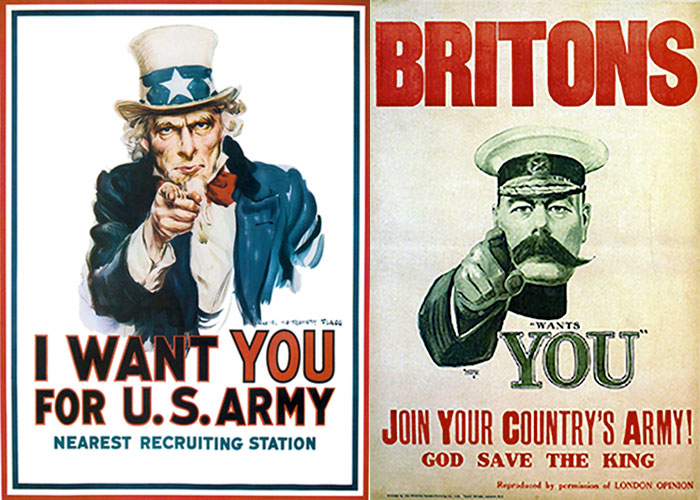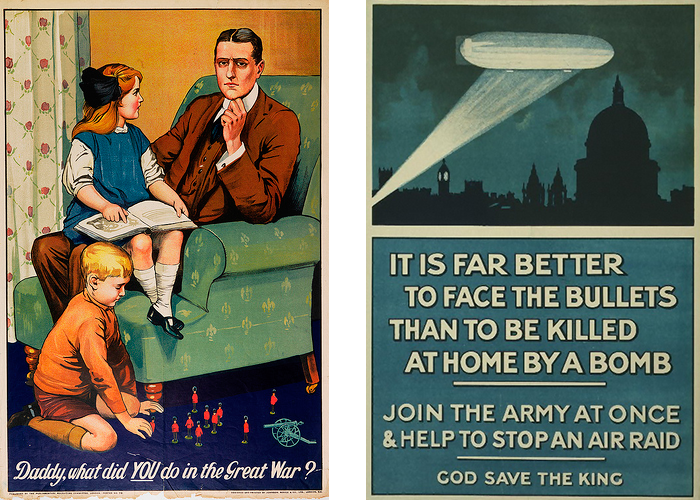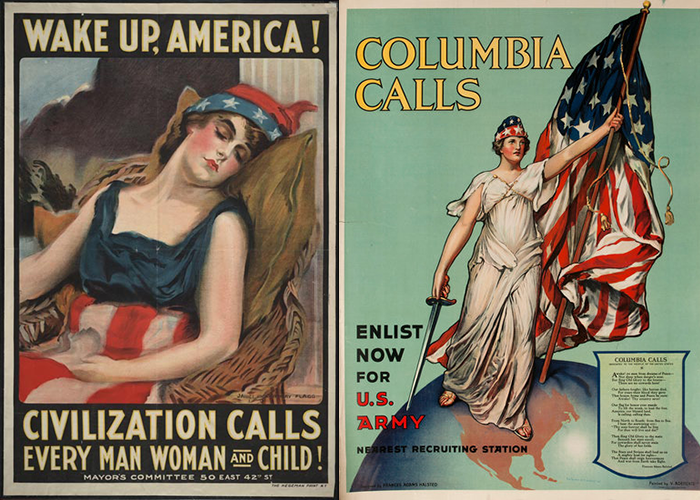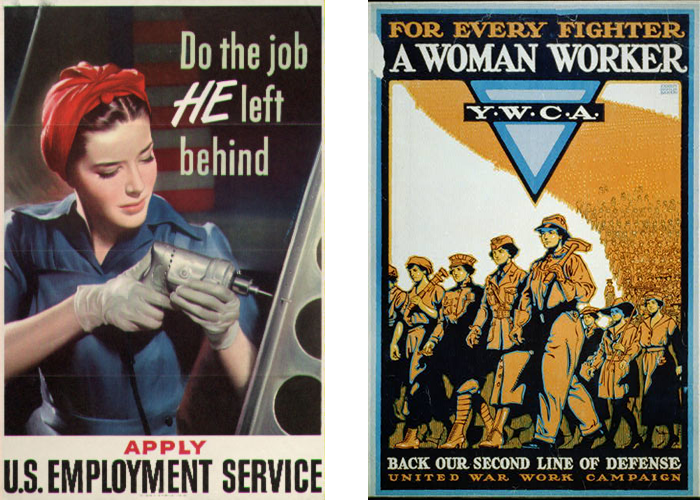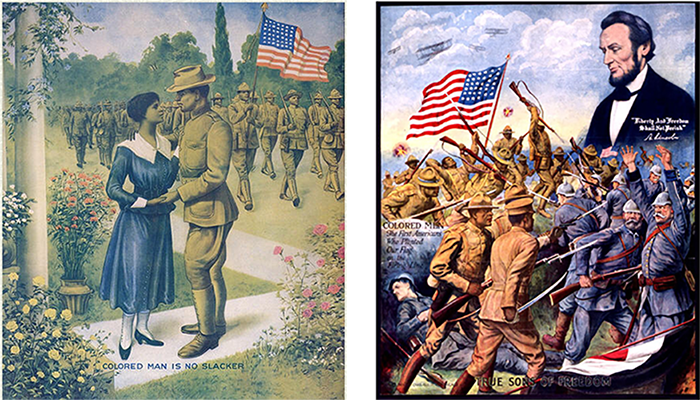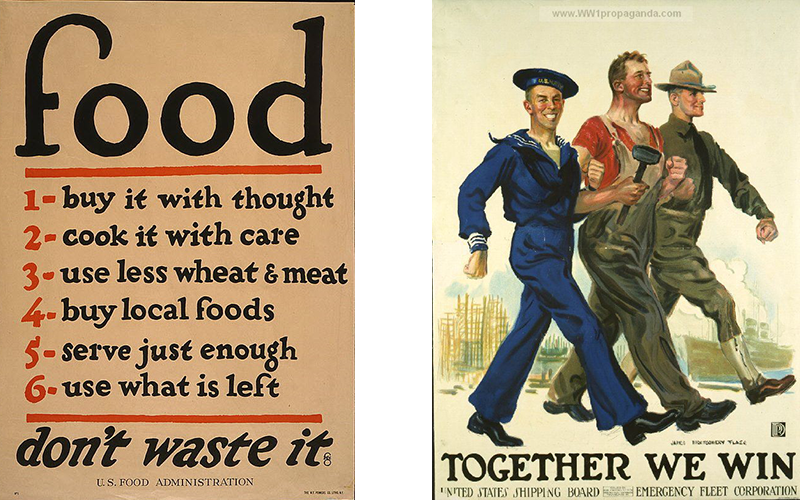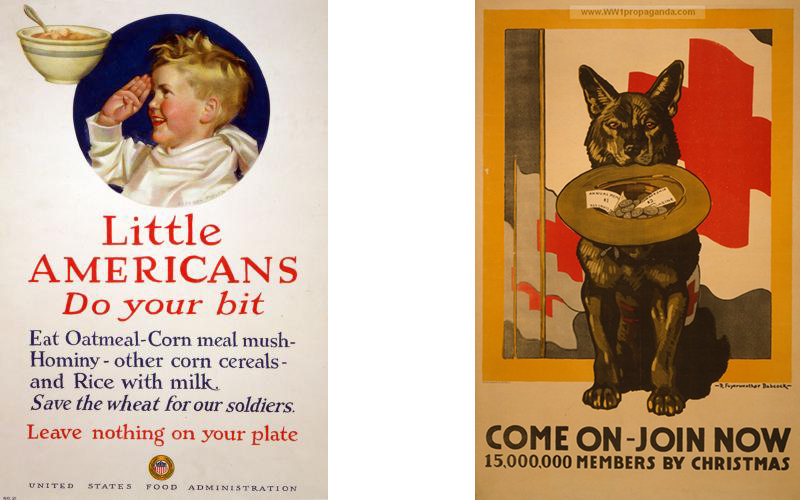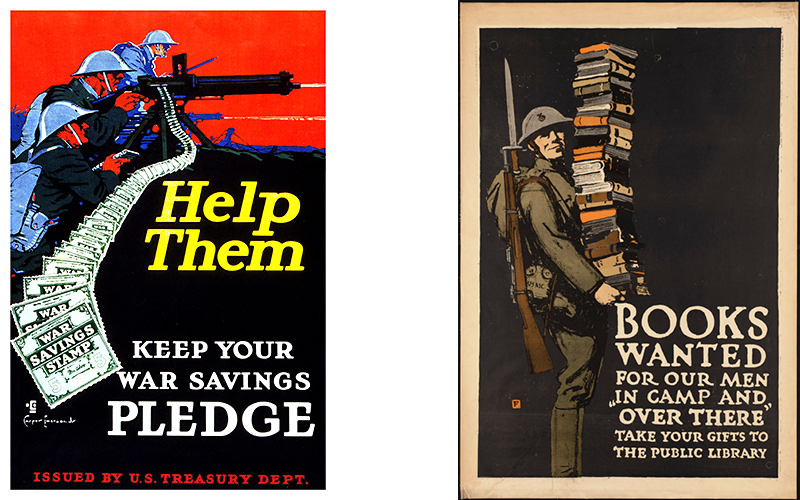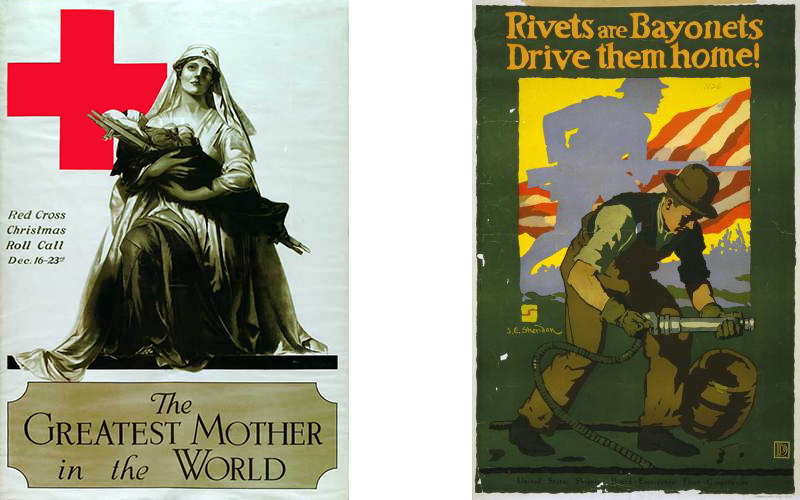What WWI Posters Say About Early 20th Century War Marketing
This year marks the 100 anniversary of the start of World War I. A good way of judging a society is the way it communicated it values and instincts during a particular time. Long before modern communication tools like the Internet and television, graphic designers were given the important task of creating propaganda posters to inspire nations and boost morale during the Great War with aesthetically pleasing imagery.
Just like terrorists, the military needs to have a marketing department too.
On 13 April 1917 – seven days after the United States declared war on Germany – President Woodrow Wilson established the Committee on Public Information. In order to reach out to Americans who didn’t read newspapers, go to the movie theater or attend community meetings, the Division of Pictorial Publicity was created to design visual communications. This comprised of a group of artists and designers who would meet once a week in New York City to discuss poster requests from the government.
The most well known poster from that period was James Montgomery Flagg’s Uncle Sam “We Want You For U.S. Army” (Above). Few people know that Flagg’s poster is actually an imitation of British graphic artist Alfred Leete’s “Britons, Lord Kitchener Wants You” poster.
Developed by the Office of Public Sector Information (or His Majesty’s Stationery Office at the time), British poster designers had a way of using images and words to bring the message home, inciting a sense of guilt for not doing your part in the war effort, as evidence in the next two posters.
Flagg also designed posters that appealed to America’s worst fear of the war coming stateside, like these poster of Columbia (a personification of America) sleeping while flames are raging behind her and encouraging recruitment.
Posters encouraged everyone to fulfil their duty in the Great War, and not just men fighting on the battlefield, but also women. Before the war, most women were housewives. But as men departed to fight on the Front, some women went with them as military nurses. In the United States, women also started doing the jobs men would do, such as machine operators and railroad conductors. There was also a greater demand in the U.S. government for more stenographers, typists and clerks.
While women were doing the work of men, this didn’t mean they received the same rights. Some employers were hostile to women working and didn’t pay them a fair wage or allowed them to unionize. Many employers didn’t provide childcare or even proper bathrooms for women. However, World War I was a major turning point for women, as this was the first time women showed that they could be more than just housewives and, thus, kickstarting the modern women’s rights movement.
The Committee on Public Information also put out posters encouraging recruitment from African-Americans. Approximately 400,000 African-Americans served in the war, and about 42,000 actually saw action in the European theatre. The posters evoked a sense of heroism, self sacrifice and even the memory of Abraham Lincoln to frame the war effort as a struggle for freedom. Nonetheless, U.S. military units were still heavily segregated and black men still faced the same level of discrimination when they came home after the war.
These are some other great posters from the time, encouraging some kind of involvement, whether it was telling men who weren’t enlisted that their labor was just as important, rationing or buying war bonds. World War I propaganda will go down in history as one of the most influential war marketing campaigns.
Check out more World War I propaganda posters here.
